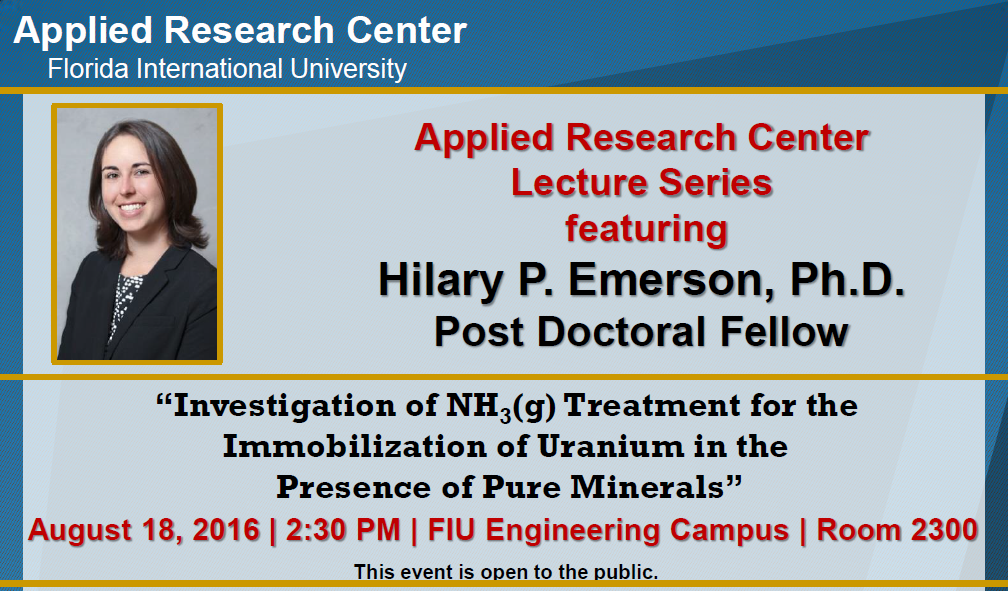
“Investigation of NH3(g) Treatment for the Immobilization of Uranium in the Presence of Pure Minerals”
August 18, 2016 | 2:30 PM | FIU Engineering Campus | Room 2300
The injection of NH3(gas) is under consideration as a novel remediation technique for uranium at the DOE’s Hanford Reservation. The goal of NH3(gas) injection is to raise the pH to dissolve natural silicate and aluminosilicate from sediments. This should lead to co-precipitation of uranium with silicates particularly as NH3 evaporates back to the gas phase and the aqueous phase returns to its natural equilibrium. In this manner, uranium is expected to be immobilized within relatively low solubility precipitates.
The primary objective of this work is to better understand the fate of uranium and mineral dissolution following NH3 injection into the vadose zone. Experiments were completed in parallel with NaOH treatment for comparison with previously accepted remediation techniques. Batch sorption and sequential extraction experiments were conducted in the presence of pure minerals (quartz, kaolinite, illite, calcite, muscovite and montmorillonite) and natural sediments from the Hanford site in Washington. The results show that NH4OH treatment removes slightly more uranium from the aqueous phase than NaOH in the presence of clays. However, quartz exhibited significantly lower removal and similar behavior for both treatments. Further, the dissolution of the minerals is significantly different in the presence of either NaOH or NH4OH for base treatment.
A short introduction to the “7 Steps to Incite Innovative Thinking” will follow this technical presentation. This information is based on the 2016 Innovator’s Forum presented by Mrs. Cathy Dixon as part of the Department of Energy’s Office of Fuel Cycle Technologies Innovations in Fuel Cycle Research program.
Dr. Hilary P. Emerson is a Postdoctoral Associate at the Applied Research Center. She received her B.S. in Environmental Engineering from the University of Central Florida and her M.S. and PhD in Environmental Engineering and Earth Science from Clemson University. Her technical area of interest is the environmental fate and transport of the actinides.
Download Flyer: Dr. Hilary Emerson
This event is open to the public.
Coordinated by
Applied Research Center (ARC)
Phone: (305) 348-4238
Email: aguirrec@fiu.edu